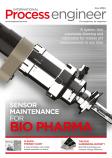For a bonding project to be a success, the adhesive must harden into a material capable of bearing the forces involved throughout the entire lifetime of the product. To achieve a good quality bonded joint, the designer can consider the substrates, joint design, surface preparation, application and cure, amongst many other factors. Here Peter Swanson, Managing Director of adhesives specialist Intertronics, discusses how medical device manufacturers can use the latest technology for quality assurance in bonding applications.
Medical device assembly often requires high-reliability, consistent adhesive bonding processes that are able to be validated. UV light curing adhesives regularly fit this bill. Typical applications for UV curing medical device adhesives include bonding needles, syringes and cannulas, reservoirs and housings, tube sets and fittings, surgical instruments and catheters. These adhesives are suitable for joining medical plastics together, as well as bonding metal to glass and metal to plastic.
Recent innovations have facilitated some in-process measures and checks which will help ensure overall quality of the finished device. Three of the most important things to measure, depending on the application, are whether the correct amount has been dispensed, whether it has been applied in the right location and whether the material has completely cured.
Finding the right location
The use of fluorescence is a well-established technique in forensics and non-destructive testing (NDT). It involves a substance, otherwise difficult to see, which fluoresces under the ‘black light’ emitted from a lamp generating long wave UV and little or no visible light, producing a glow, which is visible to the naked eye. UV light curing adhesives or coatings can be formulated with fluorescing agents, and their response to a black light readily indicates absence or presence of the material in the bondline, correct location and even some qualitative idea of quantity. In some circumstances, the fluorescent response can be measured by a sensor, allowing an automatic check. This is very useful as the adhesives are almost always transparent and difficult to detect in a bondline. Commonly used fluorescing agents in this technology emit blue light.
These agents normally absorb UV light in the same region of the spectrum as is required during curing, limiting the quantity of fluorescing agent that can be incorporated into the adhesive without affecting the cure. This then limits the fluorescent response or glow. To help overcome this, Dymax developed Ultra-Red technology. Because it does not absorb the same wavelengths used to cure the adhesive, adhesives formulated with Ultra-Red often have faster, deeper cures than blue fluorescing products, and emit a very strong red glow under black light, which is easy to see. Red fluorescing technology is particularly useful when bonding plastics that naturally fluoresce blue themselves, such as PVC and PET, providing a contrasting and more detectable response.
One-part UV curing adhesives are often suited to high-volume high-speed automated medical device assembly, due to their rapid curing and bonding properties ― for example, needle bonding. Fluorescing properties enhance the performance of automated sensing and vision systems in detection of material coverage and volume. Missing dispense cycles, undersized or oversized applied volumes, air bubbles, blocked dispensing equipment or material reservoir depletion can be detected in-process and quickly rectified with minimal production losses.
Has it completely cured?
Process trials and ultimately process validation will have determined that the specified cure method will achieve a successful cure, and ongoing measurement of the UV energy will help confirm that the required light dose is being delivered to the bondline. To provide further assurance that the cure is being adequately completed, medical device manufacturers can opt for light curable adhesives with See-Cure technology.
Adhesives with See-Cure technology are bright blue in colour prior to cure, enabling the user to confirm adhesive placement. As the blue colour is extremely visible, simple vision systems may be incorporated into assembly processes prior to curing in order to easily identify adhesive coverage and profile. During the light-curing process, the blue colour disappears and the adhesive becomes clear. The colour change is directly linked to the photo-initiator in the adhesive and confirms the adhesive has received the sufficient dose of energy to reach full cure. These simple visible process indicators provide extra assurance that the adhesive is correctly applied and cured.
The right amount
In an adhesive dispensing system, the flow rate is directly proportional to the system pressure, all other things being equal. So, if you can measure the system pressure, you can verify that the correct amount of adhesive is being dispensed.
The flowplus16 compact inline fluid sensor installs readily into an adhesive dispense system, with luer fittings at each end and a short, straight fluid path with no dead spaces. The piezoresistance pressure sensor uses an elastomer to transfer the system pressure to a measuring cell, which outputs a simple voltage signal. This can provide precise monitoring of flows up to 100 ml/min. Because the fluid channel in the sensor is coated with FDA compliant perfluoroelastomer, it is inert and therefore suitable for food and biochemical applications. The sensor’s design means it requires little maintenance and is easy to clean.
The sensor can identify whether there are any issues affecting material flow, such as unwanted air bubbles in the material, contamination, clogging caused by agglomeration of fillers, variable feed pressure or an empty material reservoir. These can all lead to inaccurate or inconsistent application of adhesive, reducing the integrity and performance of the product and lead to non-compliance with regulations and risks to health. The sensor can be connected to a PLC and enable alarms in an automated system.
In addition to monitoring adhesive or coating dispensing, the flowplus16 can be easily connected to syringes, drain tubes, infusion tubes, catheters, injection needles and similar devices to monitor many other fluid systems. For laboratory or analytic work, it will deliver pressure and flow information, and can analyse static and dynamic application flow mechanics using the output and appropriate software.


















